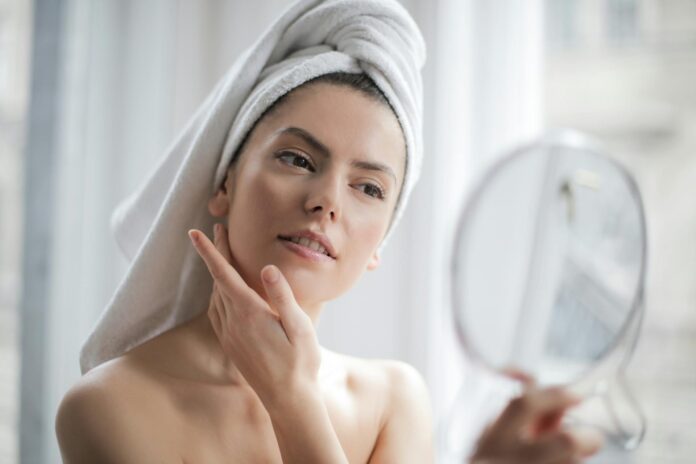Introduction to Milialar
Have you ever noticed tiny, white bumps on your skin that just won’t seem to go away? You might be dealing with a common skincare concern known as milialar. These pesky little bumps can be frustrating to deal with, but fear not – in this blog post, we’ll delve into what exactly milialar are, what causes them, and most importantly, how to get rid of them for good. Get ready to say goodbye to those stubborn spots and hello to smoother, clearer skin!
Causes of Milialar
Have you ever wondered what causes those tiny white bumps under your skin? Milialar, also known as milia, are often caused by trapped keratin (a protein) beneath the surface of the skin. When this keratin gets blocked and cannot escape, it forms a small cyst that appears as a white or yellowish bump.
Several factors can contribute to the formation of milialar. One common cause is using heavy skincare products that clog pores or applying thick makeup that doesn’t allow the skin to breathe properly. Additionally, sun damage and excessive exposure to UV rays can lead to milia development.
Poor exfoliation can also play a role in the formation of these stubborn bumps. When dead skin cells accumulate on the surface, they can trap oil and debris within pores, leading to milialar. Genetics may also predispose some individuals to developing milia more easily than others.
Different Types of Milialar
When it comes to milia, a common skin condition that many people encounter, there are different types that can manifest on the skin.
One type of milialar is primary milia, which appears as small white bumps typically on the face, especially around the eyes and cheeks. These form when dead skin cells get trapped beneath the surface of the skin.
Secondary milia, another type, can occur after trauma to the skin like burns or rashes. These also present as tiny white cysts but develop in areas where damage has occurred.
There are also neonatal milia which often affect newborn babies and usually disappear within a few weeks without any treatment needed.
Understanding these various types of milialar can help in identifying them accurately and choosing appropriate methods for removal or treatment.
Methods for Removing Milialar
If you’re dealing with milia, those pesky little bumps under your skin that just won’t seem to go away, there are various methods you can try to remove them. One popular method is extraction by a dermatologist or esthetician. They use sterile tools to carefully extract the milia without causing damage to the surrounding skin.
Another approach is chemical peels, which help exfoliate the top layer of skin and promote cell turnover. This can sometimes help clear up milia over time. Microdermabrasion is another option where tiny crystals are used to gently exfoliate the skin and unclog pores, potentially reducing milia.
For those looking for a less invasive option, certain skincare products containing ingredients like retinoids or alpha hydroxy acids may help in speeding up cell turnover and preventing new milia from forming. However, it’s essential to consult with a skincare professional before using these products on your own.
In some cases, minor surgical procedures such as laser ablation or diathermy may be recommended for stubborn or persistent milia that do not respond well to other treatments. These procedures should only be performed by trained professionals in a clinical setting for safety reasons.
Natural Remedies for Treating Milialar
Are you looking for natural remedies to tackle those pesky milialar bumps? Look no further! There are several options you can try right at home.
One popular remedy is using a gentle exfoliant like oatmeal or baking soda. These can help slough off dead skin cells and unclog pores, reducing the appearance of milialar bumps.
Another effective natural treatment is tea tree oil. Known for its anti-inflammatory and antibacterial properties, applying diluted tea tree oil to the affected area can help reduce inflammation and prevent further breakouts.
You can also consider using honey as a soothing mask. Honey has antimicrobial properties that can help calm irritated skin and promote healing.
Incorporating foods rich in vitamin A, such as carrots and sweet potatoes, into your diet may also support healthy skin cell turnover and reduce the likelihood of milia formation.
Preventing the Formation of Milialar
Preventing the formation of milialar is key to maintaining clear and healthy skin. One effective way to prevent milialar is by maintaining a consistent skincare routine tailored to your skin type. This includes cleansing, exfoliating, and moisturizing regularly.
Avoid using heavy or pore-clogging products that can contribute to the formation of milialar. Opt for non-comedogenic skincare products that won’t clog your pores.
Regularly exfoliating your skin can help prevent the buildup of dead skin cells that can lead to milia formation. Be gentle with exfoliation to avoid irritating your skin.
Protecting your skin from sun damage is crucial in preventing various skin concerns, including milia. Use sunscreen daily and wear protective clothing when exposed to the sun.
Maintaining a balanced diet rich in vitamins and antioxidants can also support healthy skin and reduce the likelihood of developing milialar. Remember, prevention is always better than cure when it comes to skincare concerns like milia! For more Please Visit https://uktimesblog.com/
Conclusion
Milialar may be a common skin concern, but with the right knowledge and approach, it can be effectively managed. By understanding the causes and types of milialar, exploring removal methods, incorporating natural remedies into your skincare routine, and taking preventive measures, you can maintain healthy and clear skin. Remember to consult with a dermatologist if you have persistent or severe milialar for personalized treatment recommendations. With patience and consistent care, you can say goodbye to milialar and hello to smooth, radiant skin!
